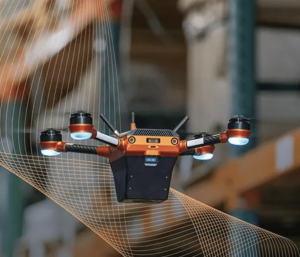DJI’s Transformation: Frank Wang’s Vision to Drone Dominance
The journey of DJI, a monumental force in the global drone market, traces back to Frank Wang’s childhood aspiration to revolutionize helicopter flying. This dream evolved into a tech empire that has redefined aerial photography, surveillance, and military applications. From a modest beginnings that include a customs incident in Japan in 2005, to its utilization on battlefields such as Ukraine, Wang’s path to success is a narrative of innovation shadowed by ethical dilemmas.
The Unexpected Start
The documentary by Amarre reveals Wang’s evolution from a dormitory inventor to a billionaire at the helm of a secretive giant. His rise has raised suspicions within the United States concerning data security and alleged ties to the Communist Party of China. More notably, with innovations like BetaVolt’s compact nuclear batteries promising 50 years of power, DJI’s future could see a dominance in the skies that blurs the fine line between recreational use and warfare.
Frank Wang’s Roots
The tale begins in December 2005, when Japanese customs seized a container filled with autonomous helicopters destined for a Chinese firm. This incident remains largely unknown but marks a significant turning point in the drone’s history. Following this, young Frank Wang—then known as Tao—embarked on his ambitious project of creating a more user-friendly helicopter.
From Dormitory to Drone Studio
After rigorous studies at Shanghai University, Wang dropped out to pursue his idea at the Hong Kong University of Science and Technology. Initially branded as overly demanding by peers, he eventually forged ahead alone. With just €2000 as a budget, he focused on making helicopter control intuitive, leading to a successful demonstration that ultimately earned him a C grade and cast doubt on his prospects in elite universities.
Turning Points
In a serendipitous encounter, a professor from his university recognized Wang’s potential and advised him to aim for the international market while enhancing his tech acumen. This interaction resulted in a partnership that saw DJI formally established on November 6, 2006, under the name Da Chang Innovation.
Growth and Challenges
In its early years, DJI struggled financially, leading to the departure of key team members. However, a critical investment from his mentor allowed DJI to film its first images and solidify its foothold in the drone industry. Following product launches like the control module and subsequent innovations in design and technology, DJI quickly took the market by storm, setting it apart from competitors like Parrot.
Aerial Significance
By 2015, DJI not only became a household name in the drone community but also raised eyebrows internationally, particularly following incidents involving its drones in sensitive government zones. Wang’s firm implemented geo-fencing, ensuring their flight paths avoided restricted areas. As the company flourished, it faced scrutiny regarding its data practices, especially with the military using its devices.
Current Implications and Future Outlook
While DJI continues to command significant portions of the global market, its drones have found dual purposes in both civilian and military contexts, used in rescue missions and regulated warfare. The ongoing conflict in Ukraine has seen the extensive application of DJI drones for strategic purposes, further showcasing the intricate ties between technological innovation and global security. Wang’s ambition, combined with rapid technological advancements, positions DJI at the forefront of future developments, bridging consumer drone use and military applications.
As we ponder the next chapter, questions arise about the implications of such technology in warfare. Recent advancements, notably in autonomous systems, reflect a potential future where drones equipped with enduring energy sources could transform warfare—for better or worse.
For more information, visit the original article.













